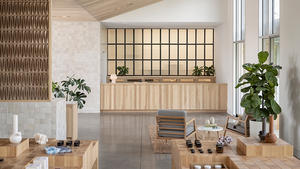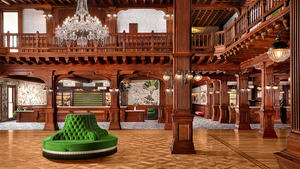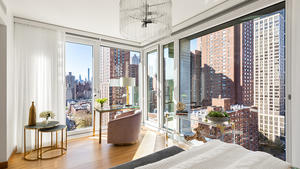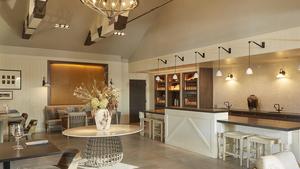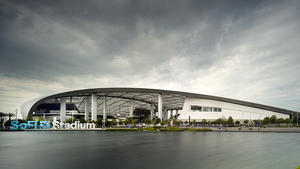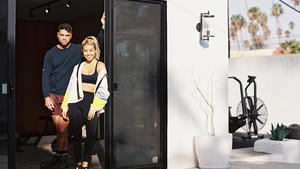Once you’re in the door, there’s plenty of advice floating around about style, project management, budget and all the rest—but how do you actually get the job in the first place? We’re asking designers to peel back the curtain and walk us through how they landed a project, step by step. Here, New York–based designer Joy Moyler shares how she landed a 60,000-square-foot commercial project on the outskirts of Moscow.
Tell me about this project.
It’s the Raevo Golf & Country Club, a 60,000-square-foot development just south of Moscow. The golf courses were designed by Jack Nicklaus, the famous golfer. Inside, there’s a restaurant, bars, a spa, pools, an indoor and outdoor loggia, women’s and men’s lounges, and a billiards room. When we were finished, there were 340 pages of FF&E.
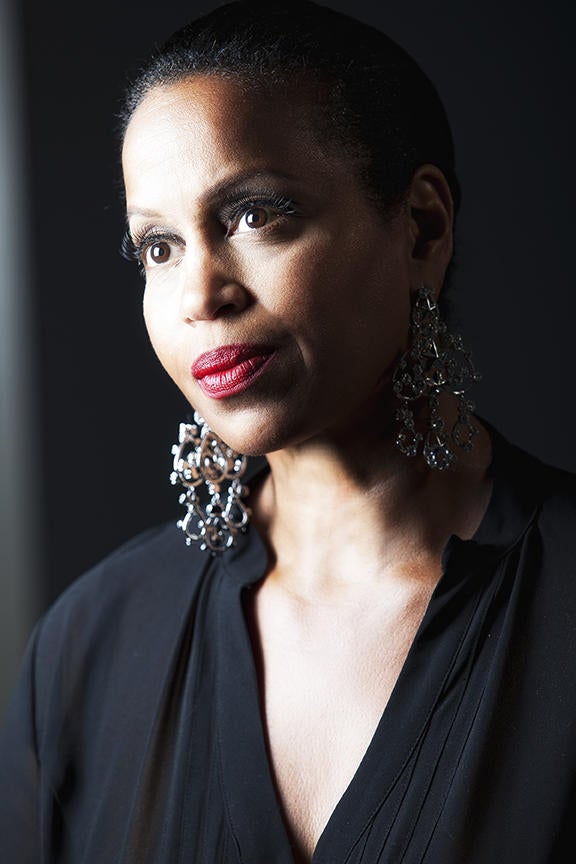
That’s such a massive undertaking. How did the job come your way?
Through the architect, Gregory Tuck. We’d worked together at Ralph Lauren years ago and had both done work for the brand since then. Gregory had created the Ralph Lauren store in Moscow, which the lead client on this project loved. So, they approached him because they wanted their new golf and country club to have that same feel. Once he got the job, he approached me about doing the interiors. He called me the day before Thanksgiving in 2015 and asked if I could meet him the next day for lunch because there was someone he wanted me to meet.
I was knee-deep in potato peels at that point, but I knew if he was asking, it must be important. So I said yes. I didn’t have any idea who the client was or what the project was, so I just brought my portfolio with me. When I arrived, there were five people with Gregory, all extremely well-dressed. We talked for the next three hours about everything from sustainability to favorite travel locations. I think a mere 30 minutes of those three hours were spent talking about the project. They’d already looked at my website and knew my work.
What was the vibe like?
It was really a getting-to-know-you type meeting. There was no, “Are you interested in doing a project in Moscow?” I learned that Russians want to get to know you before they work with you. They want to look you in the eye, see how you move, how you react to things. They want to know that they can have a relationship with you. It was basically a little love fest. The architect called me three days later and told me that the client wanted me on the job. There still wasn’t a brief or even a sketch on a napkin of what this might look like. There were no details.
How long did it take to get a proposal together?
It was six to eight weeks before I actually submitted a proposal. And Russians are very good negotiators, so everything was revised a few times. After my proposal was submitted, it took another three weeks to get everything approved.
How would you describe your vision for the project?
Russians still love American design. They wanted the Ralph Lauren feel in the space. It’s a very classically American style architecture. They love the Americana vibe. Upon entering the building, you feel that. It was simple once we realized what the program was.

What were the complications of working in Russia?
Well, the project was supposed to take two years, and it ultimately took five. I visited three times during the process. Russian weather is not very kind, so there were delays because of that. Also, investors dropped out, which changed the schedule. But as for the logistics, they secured their own vendors and, luckily, my responsibilities did not include purchasing and shipping. They had a procurement person—I was delighted.
Having to be aware of the metric sizing in everything I specified was a consideration. All of our drawings were done to scale in America and then had to be converted to metric. And because of the lengthy schedule, many of the textiles I had chosen originally had to be re-sourced because they were no longer in stock. But the most difficult part of it was the language barrier. I relied heavily on Google Translate. You constantly have to be aware of cultural differences, even something like being careful of hand gestures you’re using. There was a lot of nodding in meetings where I didn’t completely understand what was being said—a lot of nodding and vodka. But I never shy away from a growth opportunity, and that’s what this was. You can’t be intimidated by it. I’m blessed to keep growing.
Five years is certainly a different commitment than two. How did you address that change from a business perspective?
Having done large-scale projects in the past, I had an idea of what the commitment would be, and they were very open to new service contracts as the project progressed. It kept getting bigger, and it would have been a disaster if I had not had language in my contract that specified renegotiations as the scope changed. You have to look to the future, especially on an international project.
Was there anything else in your contract that made this an easier process?
My contract states that clients pay for my international travel. You have to charge for travel. If you’re on a plane for 22 hours—you’re not working, you’re losing a day of business. I’m also very specific about the quality of the place I’ll stay. They aren’t leaving the light on for me or putting me at Motel 6.

Outside of a Thanksgiving Day marathon meeting, what’s your usual first interaction with clients?
It varies so much! It’s usually not in my studio. Sometimes it’s a phone call. Sometimes it’s an introduction at a party. Sometimes it’s someone calling saying, “Can you be in London in two days?” It totally depends on the client. They might be on a movie set and emailing me asking to come [there]. Sometimes it’s set up through a client’s assistant. Sometimes it’s through a past client. As far as that first conversation, I’m usually very kind, but very clear about how I work. I’m brutally honest. I explain to them that we may not like each other every day, but I’m experienced enough to know what I’m doing. I’m the professional in the situation.
What’s most important to you in the project proposal?
Getting the scope of work nailed down immediately. Clients don’t think about the details. They’ll say, “I want a pool.” OK, indoor or outdoor? A lap pool or an Olympic-sized pool? Do you want seating integrated into it? How about a diving board? They’ll say, “I want to cook outside.” Does that mean you want a Weber grill or a fully functioning kitchen? These are the things that they often don’t think about. The specifics are what cost money. So, I try to get them to think about those things and then come up with something more specific. If I just hurry up and get them to sign a contract, I could be overlooking things. Getting specific at the start eliminates [problems later] on.
What do you normally wear to a first meeting with a client?
It depends where I’m going. If I’m meeting them on a movie set, jeans and nice shoes. If I’m going to the Ritz-Carlton, more professional business attire. And heels—always heels—unless I’m in Malibu or somewhere more casual. I always wear jewelry and lipstick. You have to be prepared. You can’t look like you’re going to Costco. You have to respect your profession or the client won’t respect you.
What do you bring with you to a first meeting?
In my bag is always a notebook, a sketchbook, maybe an iPad, multiple phone chargers, always pens, pencils and markers and a roll of trace paper because I love to sketch. And a real camera to take additional photos.

Do you charge for an initial consultation?
It depends on the project. I don’t always. If it’s a big, big project, I do not. If it’s a client that I’ve never met before and isn’t a referral or someone who has ever worked with a designer, then I’m likely to charge a consult fee, just in case it’s a lookie-loo situation, my time is compensated. But you can usually identify those types of people early in the vetting process.
Do you ever leave a meeting and just say, “I don’t want to work with this person”? How do you handle that?
If I attend a meeting and don’t feel like the client is serious or something like that, I’ll still follow up. Sometimes it’s just that someone was having a bad day. If I’m picking up a sense that something else is going on with them, like if they’re on the phone a lot, dealing with other things and it has nothing to do with me, then I move forward and recognize that it was just an off day. But if someone is nasty to the staff at a restaurant or generally belligerent toward other people in my presence, that, to me, is who they are. Then you have to determine if you want to have a relationship with that person, because it really is a relationship when you’re designing someone’s home. You’re not getting married at the end, but you’re definitely going on a lot of dates together, you know what I mean? If someone is disrespectful, I don’t tolerate that. I’m not engaging with that, especially for a long period of time.
How much research do you do online before your first meeting?
If it’s a referral, I don’t Google someone. But if someone cold-calls us, I’m likely to do some research just to make sure they are who they say they are. I’ll check out their LinkedIn or look up their business. But I don’t do deep dives, because I don’t want to make up my mind before I’ve met them. I don’t want to have preconceived notions, because on paper or just your social media profile, that’s not a true reflection of who someone is. So, I like to keep an open mind, because I imagine they’re doing the same for me.
Homepage photo: Inside a bar at Raevo Golf & Country Club | Courtesy of Joy Moyler


















